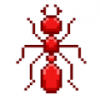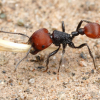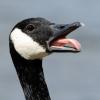So lately I've been seeing the introduction of region-specific threads and thought "Hey, why not make one for those of us that keep termites?". The region specific threads have proven to be remarkably helpful by allowing those of us within a particular region to alert one another about local nuptial flights, by bringing colony journals that featured ants native to a specific region together in a single location and most importantly, by bringing those who work with the same assortments of native species and those that live in the same region together. This would allow people to discuss rearing termites and share information pertaining to termites in a much more efficient and effective manner. With that said, please use this thread to share colony journals, documentaries, report nuptial flights, help newcomers / give advice, share / provide tutorials and so on. Although I would prefer to keep the conversation geared towards rearing termites for the use of studying and observing their behavior, I don't see any harm in discussing the use of termites as "ant food" (For those that don't know, most ants will readily accept termites as food.). Hopefully, This thread will serve as a catalog containing most of the conversations pertaining to termites on this forum, allowing people to readily access them if need be (This might be a tad too ambitious, but I guess we will see what happens.). Although small communities (especially on Facebook) exist that are geared primarily towards the rearing of termites, the hobby is still very much in its infancy and techniques / equipment that aid in doing so are far and few between. Maybe the introduction of this thread will allow people to come up with and share inventive solutions to problems that one may encounter when keeping termites as pets (Proper termitariums aren't really a thing in the US, unless you consider "Termitat").
- Formiculture.com
- Forums
- Gallery
- Members
- Member Map
- Chat


















